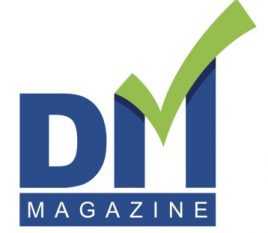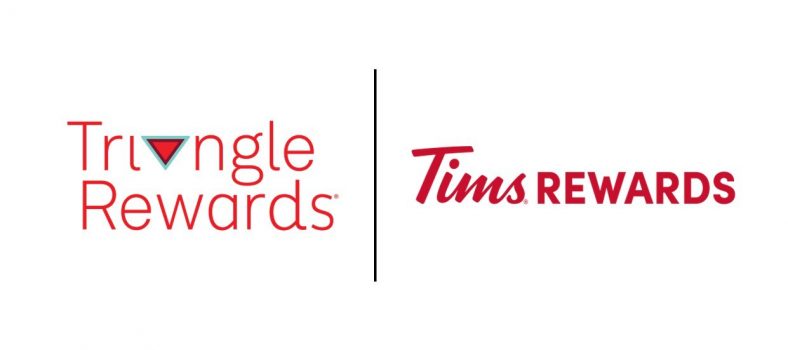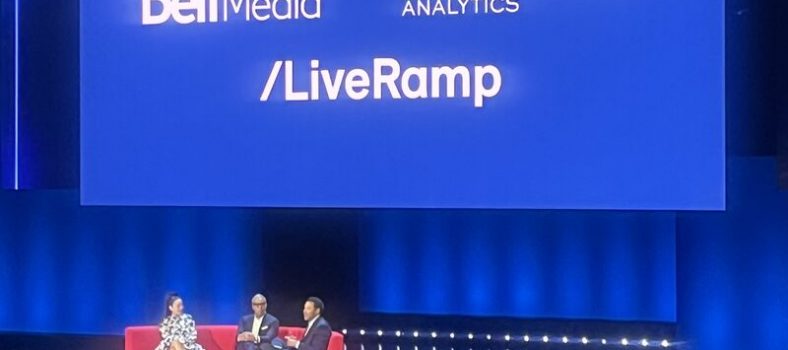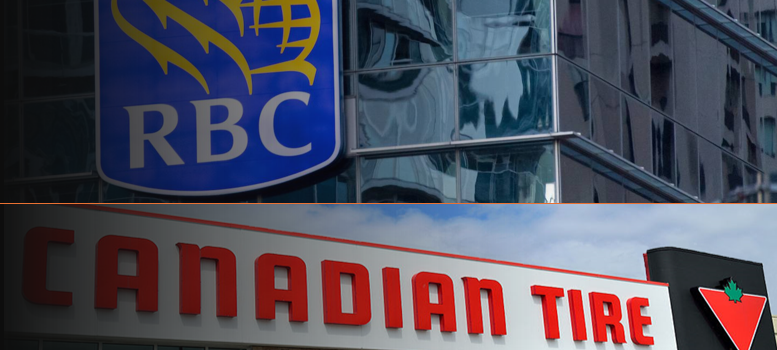 By Richard Schenker
By Richard Schenker
A couple of weeks ago, Tim Horton’s, Canada’s iconic coffee chain, announced the latest iteration of Roll Up to Win, which will run from February 24th to March 23rd. Following the brand’s 60th anniversary, during which they brought back a variety of nostalgic baked goods, Tim Horton’s revealed that they would reintroduce the beloved physical cup for revealing prize winnings during part of the contest. This cup has long been a hallmark of the promotion, but the Covid-19 pandemic forced the chain to abandon it and transition to a fully digital format for participation, prize reveals and redemption.
In an effort to rekindle this iconic Tim Horton’s experience—likely aimed at re-engaging less digitally savvy older customers and adding fun for younger ones—the brand will run a hybrid contest, featuring both physical cups and digital prize reveals through their app. Time will tell if this decision proves effective from both a customer experience and financial perspective. Personally, I suspect it will add some complexity to the user experience.
Each year, McDonald’s Canada makes a valiant attempt to upstage this iconic Canadian contest tradition by pre-emptively launching its own promotional efforts to distract QSR customers from Tim Horton’s and entice them to visit McDonald’s instead. Some of McDonald’s past counter promotions have included mass mailings of promotional discount coupons, $1 coffee weeks, and even free coffee offers. McDonald’s typically does not run their Monopoly contest head on with Roll Up to Win.
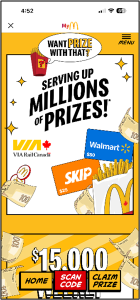 This year, McDonald’s has introduced a non-branded contest, loosely referred to as “Want Prize With That?” This digital initiative provides peel-off codes on select menu items. Once customers peel off a code, they can either scan it in the McDonald’s app to see if they’ve won or manually enter it. The contest runs from February 4th to March 3rd, aiming to drive app adoption, usage and increase frequency and spend. According to the contest’s advertising, there are $15,000 weekly cash prizes. Additional prizes include trips for two with Via Rail, $25 SKIP gift cards, $50 Walmart gift cards, one-year subscriptions to Paramount+, up to 10,000 My McDonald’s Rewards points, and several free menu items. McDonald’s has also integrated its loyalty program with the contest, so each code scan tracks whether a customer has won and indicates how close they are to earning 2,000 My McDonald’s Rewards points with each peel-off scan. The 2,000 points is awarded after 5 peel-off code scans. This “progress-to-reward” mechanism is a proven and effective neuroscience strategy that motivates customers to visit McDonald’s more often to reach a reward worth 2,000 points.
This year, McDonald’s has introduced a non-branded contest, loosely referred to as “Want Prize With That?” This digital initiative provides peel-off codes on select menu items. Once customers peel off a code, they can either scan it in the McDonald’s app to see if they’ve won or manually enter it. The contest runs from February 4th to March 3rd, aiming to drive app adoption, usage and increase frequency and spend. According to the contest’s advertising, there are $15,000 weekly cash prizes. Additional prizes include trips for two with Via Rail, $25 SKIP gift cards, $50 Walmart gift cards, one-year subscriptions to Paramount+, up to 10,000 My McDonald’s Rewards points, and several free menu items. McDonald’s has also integrated its loyalty program with the contest, so each code scan tracks whether a customer has won and indicates how close they are to earning 2,000 My McDonald’s Rewards points with each peel-off scan. The 2,000 points is awarded after 5 peel-off code scans. This “progress-to-reward” mechanism is a proven and effective neuroscience strategy that motivates customers to visit McDonald’s more often to reach a reward worth 2,000 points.
It’s curious that McDonald’s did not formally brand this contest, raising the question of whether this is merely a test concept and could potentially be a one-off promotion if it doesn’t meet its goals.
The contest feels somewhat undifferentiated. In fact, it appears to closely mimic the Roll Up to Win contest, minus the physical cup reveal mechanic. McDonald’s has integrated loyalty points, tied winning to select menu items, and structured the prizes similarly to Roll Up to Win. However, Roll Up to Win offers more varied prizes and major, headline-grabbing big-ticket prizes. These headline prizes are typically the driving force behind consumer interest and action but are noticeably less abundant in McDonald’s contest.
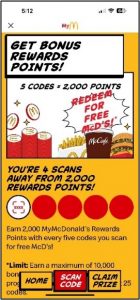 In terms of participation mechanics, aside from the cup roll portion of Tim Horton’s’ contest this year, Roll Up to Win participants simply scan their Tim Horton’s app and digitally roll to reveal their prize, providing instant gratification. With McDonald’s, however, the process involves more effort. One must locate the peel-off sticker on a participating menu item (which isn’t always obvious), peel it off, open the app, and scan the very small sticker to see if they’ve won. This requires more work by the customer.
In terms of participation mechanics, aside from the cup roll portion of Tim Horton’s’ contest this year, Roll Up to Win participants simply scan their Tim Horton’s app and digitally roll to reveal their prize, providing instant gratification. With McDonald’s, however, the process involves more effort. One must locate the peel-off sticker on a participating menu item (which isn’t always obvious), peel it off, open the app, and scan the very small sticker to see if they’ve won. This requires more work by the customer.
One must wonder why McDonald’s didn’t opt for a completely different contest format. I would have expected them to create a more innovative and differentiated design to truly stand out to customers. Instead, it feels like a derivative contest with a different prize reveal mechanic, falling short of matching Roll Up to Win’s iconic status.
It will be interesting to see whether McDonald’s continues this contest next year, as that would likely indicate the success of their initiative. In the meantime, as the weather in most of Canada remains cold and snowy, Canadians will no doubt be heading either right or left to grab their hot drinks, baked goods, and other menu items from these QSR giants.
Richard Schenker is a highly accomplished customer engagement thought leader, loyalty practitioner and partnership curator who has designed, renovated, and managed some of the world’s leading customer loyalty programs. He has an impeccable track record of success at enriching transactional and emotional relationships between iconic brands and their customers, across multiple business sectors. Richard has spent the first half of his career in senior loyalty roles with the Hudson’s Bay Company and Shoppers Drug Mart and the remainder of his career in leadership roles with leading loyalty agencies, Air Miles and Bond Brand Loyalty. Currently he is the Founder & Chief Customer Engagement Officer of Loyal Strategy Consulting, a consulting firm focused on enriching customer loyalty for leading brands. Richard can be reached at: rschenker@loyalstrategyconsulting.com or visit: https://loyalstrategyconsulting.com
